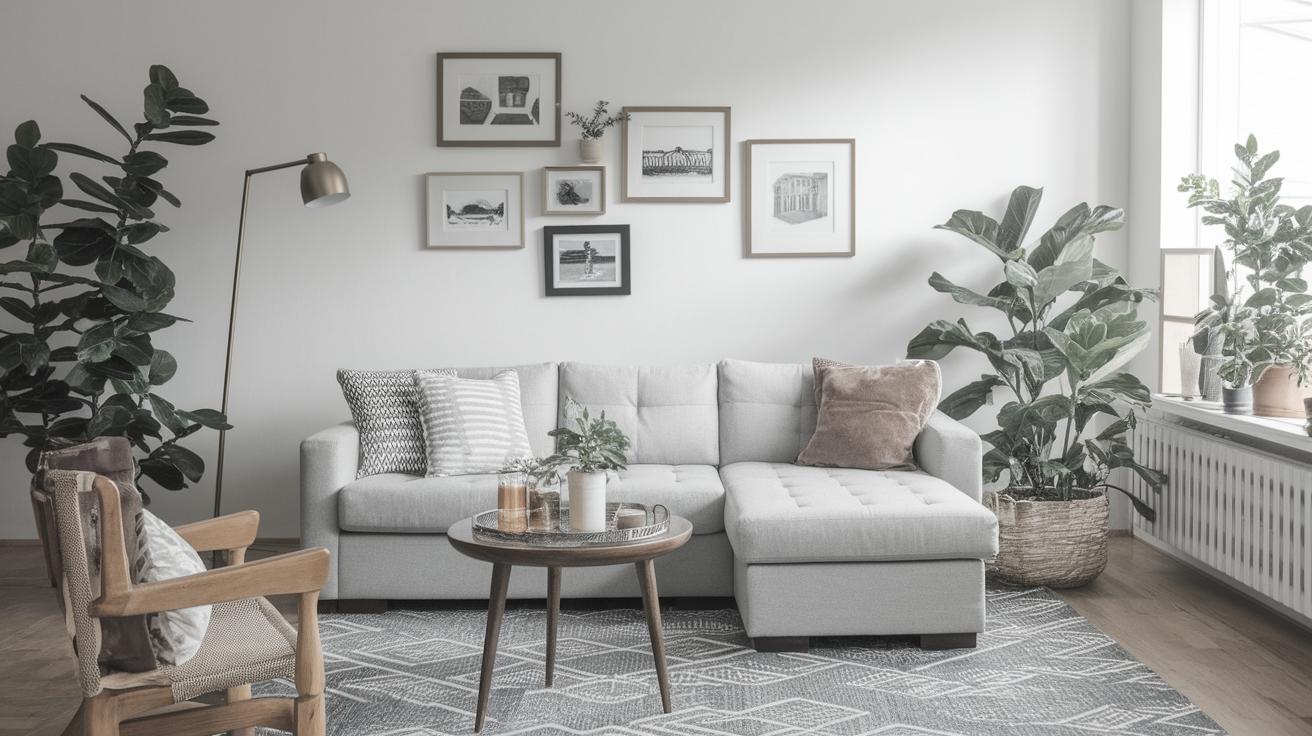Effective Strategies for Decluttering a Home
Decluttering your home doesn’t have to be a monumental task. By approaching it methodically, room by room, and employing some tried-and-true tactics, you can reclaim your space efficiently and with less stress. This guide covers effective strategies for decluttering various areas of your home—bathroom, bedroom, kitchen, and more. It also highlights the benefits of a tidy living space, practical tips for maintaining order, and environment-friendly disposal methods. Furthermore, we offer insights into creating a feasible timeline to keep you on track. For those eager to transform their homes into organized sanctuaries, this comprehensive guide provides the tools and motivation you need.
How to Declutter Your Space, Room by Room
Decluttering can seem overwhelming if taken as a single, enormous project. The key is to break it down, tackling one room at a time. By adopting a room-by-room strategy, you can focus your energy and make noticeable progress without burning yourself out. The satisfaction from seeing one room transformed can fuel your motivation to keep going.
Start with the rooms that need the most work or those that might give you an early, quick win, which can be motivating. Assign specific days or weekends to each room, allowing time for sorting, cleaning, and organizing. Using a systematic approach, such as the one advocated by organizational guru Marie Kondo—who suggests keeping only items that spark joy—can streamline the process and assure success.
The Bathroom
Bathrooms, often the smallest spaces in the home, can quickly become cluttered with beauty products, toiletries, and cleaning supplies. Begin by discarding expired products and items that you rarely use. Consider reducing duplicates—one moisturizer or shampoo at a time is usually sufficient.
Organize the remaining items by category: skincare, dental care, etc. Clear storage containers or baskets can help group similar items together, making it easier to maintain order. Utilize vertical space with over-the-door racks or shelves to maximize storage. Transforming your bathroom into a streamlined space can make your daily routines much more efficient and pleasant.
The Bedroom
Your bedroom should be a sanctuary from the chaos of everyday life, but clutter can disrupt relaxation and sleep. Start by tackling nightstands, the top of dressers, and any other surfaces. These areas tend to accumulate items quickly, but often contain things we don’t need close to us at night.
Consider your furniture arrangement as well. If your bedroom feels cramped, a new layout could create a better spatial flow. Additionally, make under-bed storage work for you, by using bins to hold out-of-season clothing, shoes, or other items that need not be on full-time display. A decluttered bedroom can significantly improve mental clarity and promote more restful sleep.
Closet and Clothing
Closets are notorious for becoming overburdened. Many of us hold onto clothing “just in case,” but these items can take up valuable space. Remove all items from your closet and assess each one. If it no longer fits or hasn’t been worn in a year, consider donating or repurposing it.
Organize clothes by category: keep frequently worn items front and center on hangers or at the top of drawers. Color coding or seasonal rotation may also improve the accessibility of the items you wear most. Implement storage solutions like hanging organizers or shoe racks to further optimize the space.
The Entryway, Mudroom, and Foyer
The entryway or mudroom is often the first thing you see when returning home, setting the tone for your environment. Keeping it clutter-free can create a more welcoming atmosphere. Start by examining footwear, outerwear, and other frequently used items that might not need to stay there permanently.
Use hooks, benches with built-in storage, or cubbies to organize shoes, bags, and seasonal gear. Make it a rule for household members to store shoes and jackets neatly, and keep keys and mail corralled on a small entryway table or in a dedicated organizer to prevent disarray.
The Kitchen
The kitchen is often the heart of the home, but it can also be a source of constant clutter. Start by clearing countertops of unnecessary appliances or gadgets. Identify duplicates and remove items you seldom use.
Create designated zones for baking, cooking, and prepping, storing relevant tools and ingredients nearby. Drawers and cabinets can benefit from organizers to separate utensils, pots, and pans, reducing the time spent finding things or dealing with cluttered counters.
Tip:
Label pantry shelves and containers to make it easier for everyone in the household to return items to their proper place, maintaining order and preventing clutter.
The Living Room
The living room should be a place for relaxation and entertainment, but clutter can distract from comfort. Abolish piles of magazines, DVDs, and books that don’t serve your interest anymore.
Integrate smart storage solutions like ottomans with space inside, multi-purpose furniture, or wall-mounted shelves to keep belongings out of sight yet accessible. Keep sentimental items on rotating display and stash others safely.
Tip:
Designate one basket or container for remote controls, chargers, and electronic devices to avoid the inevitable mess that comes with multiple remotes.
Benefits of Decluttering Your Space
Decluttering your home brings multiple benefits, from reducing stress levels to improving mental clarity. A tidy environment feels more inviting and comfortable, changing your home’s energy.
Moreover, decluttering can be financially advantageous, as you become more mindful of purchases, avoid duplicate buys, and may even discover items you can sell to recoup some costs. A clear space can motivate you towards other lifestyle improvements, promoting productivity and creativity.
Tips for Decluttering Your Home
Use Containers to Sort Items
Containers and bins are indispensable in any decluttering mission. Use them to group similar items together—small items, by theme, or by room. This organization makes retrieval easy and encourages household members to maintain neatness by returning items to their places.
Keep These Decluttering Rules in Mind
Remember the ‘one in, one out’ rule to prevent clutter from re-accumulating. When you buy something new, something old should leave your home. Regularly assess your belongings and maintain a recurring donation box to make decluttering a continuous process.
Creating a Decluttering Timeline
Formulate a timeline to provide structure and momentum to your decluttering endeavor. Decide which areas require immediate attention and set realistic goals for each room. Allocate specific days for certain tasks, such as weekends for heavy sorting.
Sticking to a schedule transforms a chaotic chore into a series of manageable steps. Additionally, adapting the timeline when necessary allows for breaks and reassessments, preventing burnout while ensuring progress.
Where to Dispose of Clutter
Proper disposal of clutter helps you maintain an organized space and contributes to a more sustainable planet. Donate gently used items to thrift stores or charitable organizations. Recycle paper, glass, and certain plastics. Check local regulations for disposal of hazardous materials like expired medications or old technology.
Hosting a garage sale is another way to clear out usable items while potentially earning money. Digital marketplaces can also connect you with buyers for your items. Learning the disposal habits of your locality maximizes your decluttering effects responsibly.
More from The Spruce
For more insights and practical advice on home improvement, check out our other articles at The Spruce. Whether you’re tackling DIY projects or exploring the latest home design trends, we provide a wealth of information to help you enhance your living environment.
Future Prospects
As you execute these decluttering strategies and enjoy a more organized home, you’ll likely uncover additional opportunities to refine and personalize your space. Consider expanding your focus on sustainable living, perhaps reducing consumption or making eco-friendly choices. Embrace the simplicity and clarity that comes with a decluttered home, and let it extend into cultivating a more balanced lifestyle.
| Room/Element | Key Strategy |
|---|---|
| Bathroom | Discard expired products, organize with containers |
| Bedroom | Clear surfaces, rethink furniture layout |
| Closet and Clothing | Remove unused clothes, use storage solutions |
| Entryway, Mudroom, Foyer | Maximize storage with hooks, benches, organize consistently |
| Kitchen | Clear countertops, create purpose zones |
| Living Room | Reduce media piles, use multifunctional furniture |


